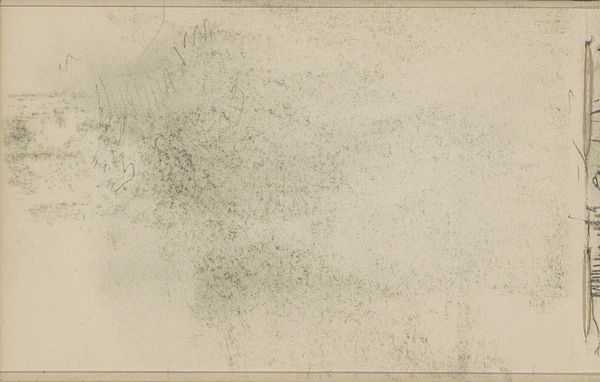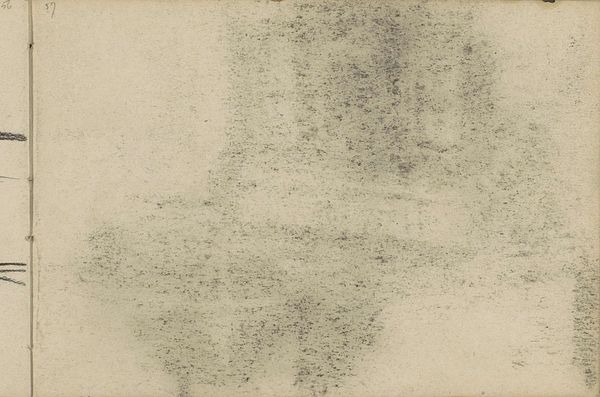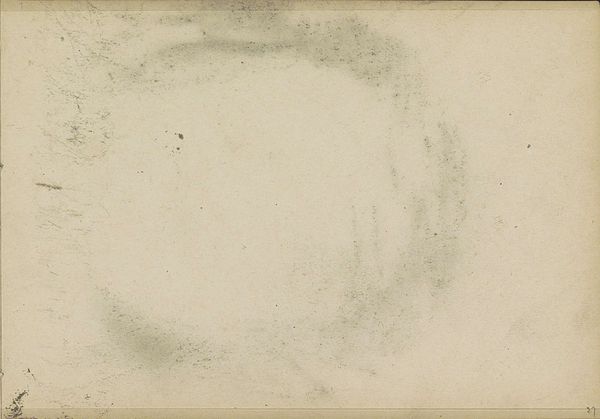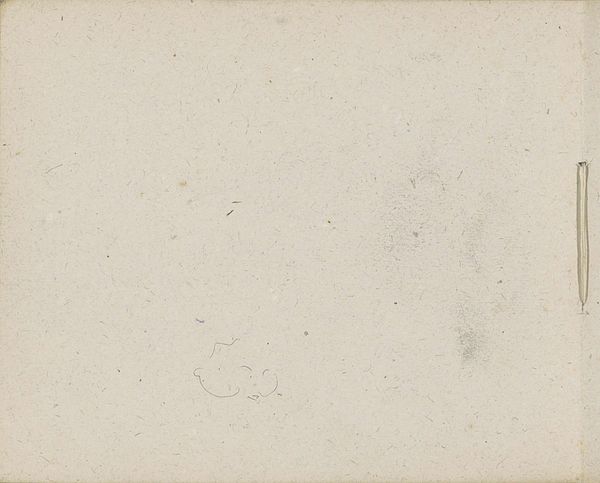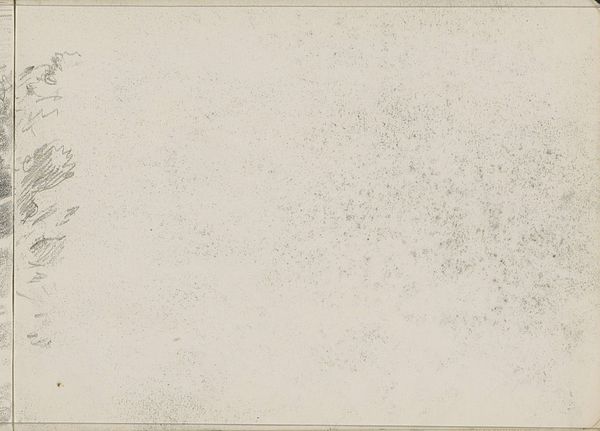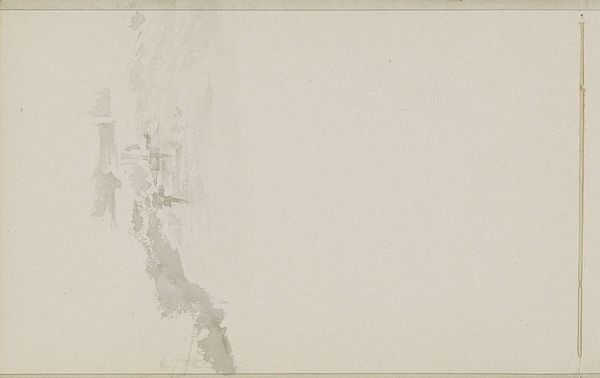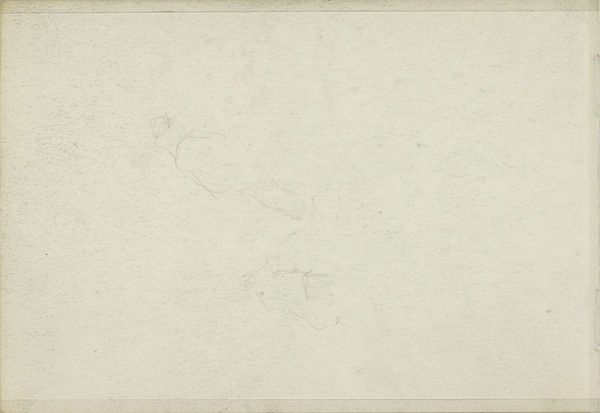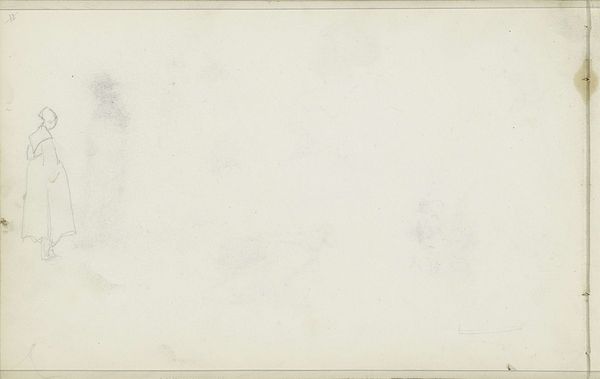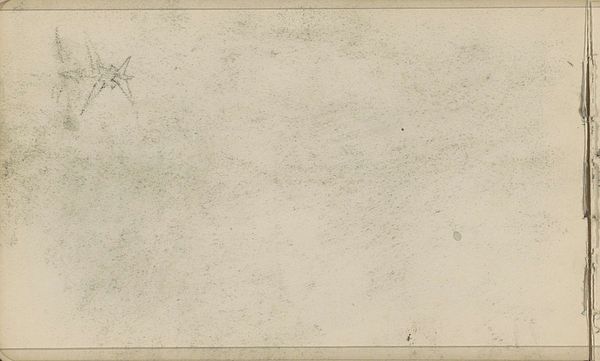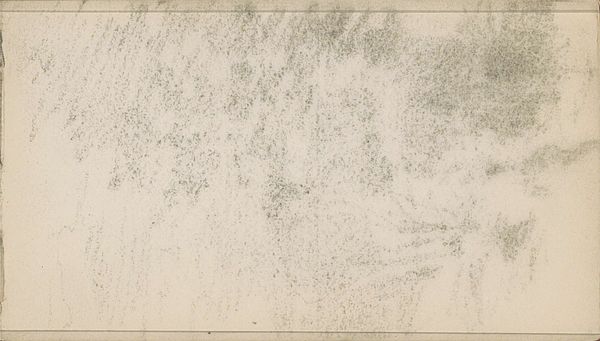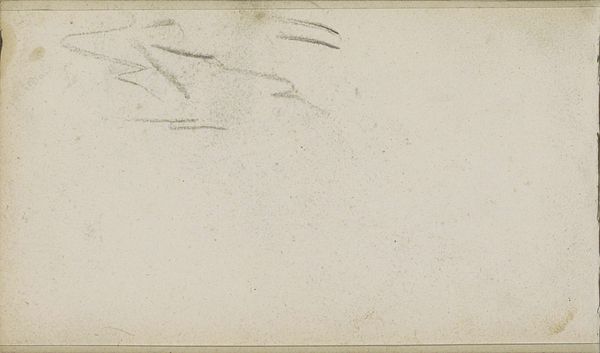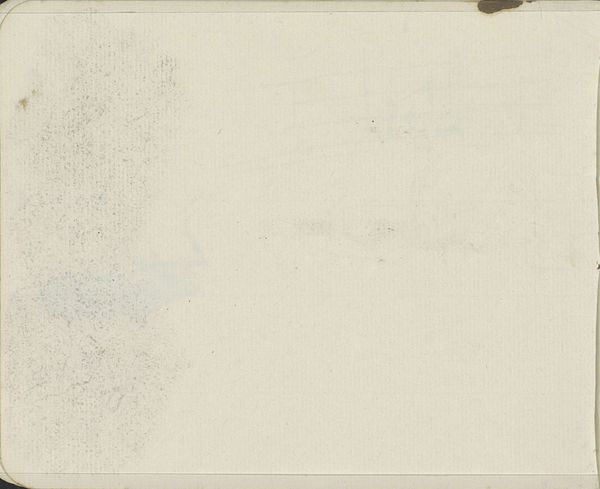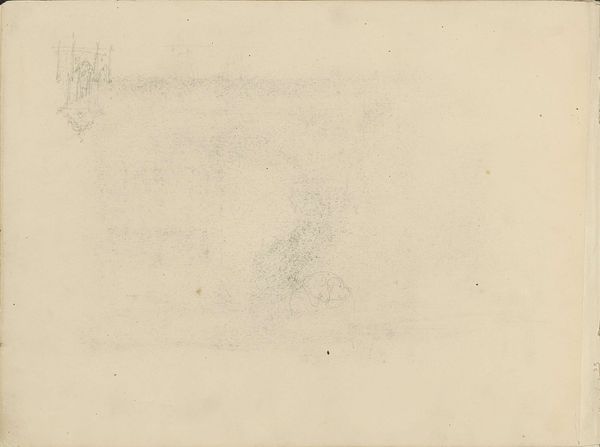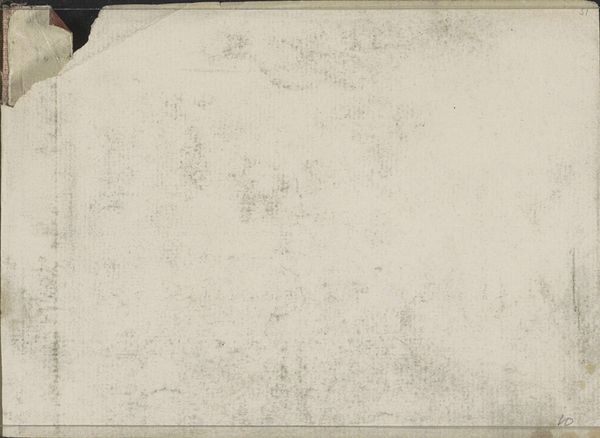
Copyright: Rijks Museum: Open Domain
Curator: This is "Abklatsch van de krijttekening op pagina 18," or a copy of a chalk drawing on page 18, by Willem Witsen, created sometime between 1870 and 1923. It’s currently held here at the Rijksmuseum. Editor: My first impression is a muted, almost ghostly landscape. The subtle gradations in graphite suggest a misty atmosphere, a place more felt than seen. And the prominent oval shape—a leaf, perhaps—grounds the abstraction with an unexpected anchor on the left. Curator: Indeed. Witsen was active within Dutch Impressionism, deeply involved in depicting the atmospheric conditions of the landscape, particularly the play of light and shadow that we see echoed in this particular work. It resonates with similar abstraction explored at the time in Europe as a response to urbanization and industrialization. Editor: What strikes me, though, is how process-driven it feels. The visible texture of the paper, combined with the almost ethereal quality of the graphite, reveals more about the act of drawing itself than a precise rendering of a landscape. The labor, and indeed time to produce such gradations. Curator: Well, the work's creation also speaks volumes about artistic practices. Its function was a “copy,” which emphasizes its position to its art historical predecessors but raises important questions about its artistic significance. Is the intention accuracy or perhaps exploration? It also raises interesting avenues concerning value—where is the monetary value, and why? Editor: Perhaps accuracy isn't the key, as you propose. Considering the artist's skill, you begin to think this isn't really about mimetic representation but is more about the manipulation of the graphite, pushing its boundaries. Its impact has lasting artistic importance through experimentation, after all. Curator: Absolutely. That is very possible. What resonates with me is thinking about the social space of artmaking. Here we see the drawing's existence due to Witsen, a man from a family of privilege who had access to training and connections necessary to thrive as an artist. These historical roots play such an important part to what we see and consider about the work today. Editor: And considering its materials—graphite on paper—are relatively humble, in the best possible way. In our own day, such accessibility encourages an exciting dialogue about art production outside of established hierarchies. We see more and more great art due to more democratic forms of engagement with the production and making of art. Curator: A hopeful lens for appreciating art, thank you for sharing your perspectives on its means of production, challenging us to reconsider what we value in art and the social contexts that define it. Editor: My pleasure! It's been quite enlightening exploring these intersections together, appreciating the skill and social elements ingrained in this evocative landscape.
Comments
No comments
Be the first to comment and join the conversation on the ultimate creative platform.
